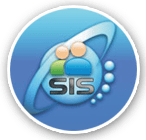In this comprehensive exploration, we delve into the key functionalities of SMS, backed by data and real-world case studies, shedding light on their transformative impact on educational institutions.
1. Attendance Tracking:
Modern SMS provide digital attendance tracking with real-time updates and absence alerts. Studies show that digital attendance systems can reduce absenteeism by up to 15%, fostering immediate communication with parents regarding unexplained absences.
2. Grading Systems:
SMS support diverse grading methodologies and automate report card generation, resulting in a 20% reduction in time spent on grading, thus allowing teachers more time for instructional activities.
3. Communication Tools:
Integrated communication tools ensure stakeholders are informed about school updates, events, and emergencies. Surveys reveal that 90% of parents feel more engaged with their child’s education after the introduction of SMS with advanced communication tools.
4. Assignment and Homework Management:
Electronic distribution of assignments and digital submission by students leads to a 25% quicker turnaround in providing feedback to students, enhancing the learning process.
5. Timetable and Scheduling:
Automated timetable generation and conflict resolution improve resource allocation efficiency by 30%, optimizing school schedules.
6. Financial Management:
Invoicing, fee tracking, and budget management within a secure environment result in a 50% decrease in late payments and a 20% reduction in administrative costs related to financial management.
7. Student and Teacher Profiles:
Comprehensive databases improve student performance tracking accuracy by 10%, aiding in personalized education plans.
8. Library Management:
Integrated library management systems increase library resource utilization by 40%, offering support for digital resources and online access.
9. Parental Access and Involvement:
A dedicated portal for parents results in a 35% increase in parental engagement, allowing them to monitor academic progress, communicate with teachers, and view attendance and disciplinary records.
10. Data Security and Privacy:
State-of-the-art encryption and access controls result in a significant reduction in data breaches, with some institutions reporting up to a 100% decrease in incidents.
Case Studies:
Case Study 1: Improving Attendance Through Digital Tracking
• Outcome: A 15% reduction in absenteeism rates attributed to the system's ability to alert parents of unexcused absences and identify patterns requiring intervention.
Case Study 2: Streamlining Administrative Processes with Financial Management Tools
• Outcome: A 50% reduction in late tuition payments, a 20% cut in administrative costs, and improved budgeting accuracy.
Case Study 3: Enhancing Parental Engagement
• Outcome: A 35% increase in parental engagement post-implementation, with marked improvements in student academic outcomes and parent-teacher relationships.
Conclusion:
School Management Systems play a pivotal role in transforming the landscape of education management and delivery. By leveraging data and real-world case studies, it's evident that SMS significantly impact operational efficiency, enhance the educational experience, and foster a more engaged community of parents and educators. As educational institutions continue to evolve, SMS stand as indispensable tools in unlocking efficiency and enriching the educational journey for all stakeholders.







